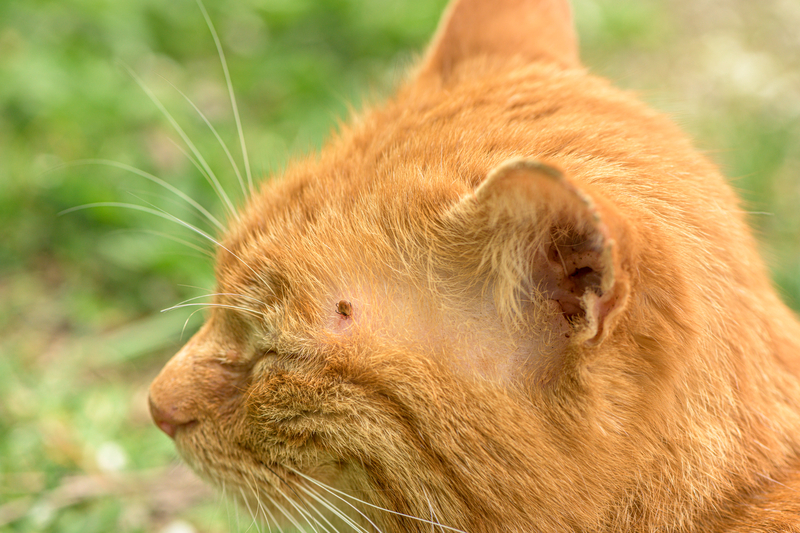During the Spring and Summer months, across many UK beauty spots popular with dog walkers, lurks a small inconspicuous creature capable of causing much discomfort and illness in both pets and us humans.
Ticks are most commonly found in grassy and wooded areas. They feed off the blood of host creatures, and often simply crawl into pets’ fur as they brush by, latching onto their skin and fur.
When found and removed quickly, ticks pose minimal risk. But when left untreated or allowed to transfer between pets and humans, they can infect their hosts with illnesses such as bacterial Lyme Disease, the symptoms of which can range from mild to debilitating.
So how can we prevent ticks from impacting our health? What can we do if either ourselves or our pets get bitten? And what should we look out for to prevent serious infection?
What is Lyme Disease?
Lyme disease is a bacterial infection caused by borrelia bacteria, which can spread throughout the body if left untreated.
It usually takes between 24-48 hours for the bacteria from a tick bite to pass into their host, because the bacteria only leave the tick’s gut when they are fully fed, which can take a few days. This is why it is so important to remove the tick from the skin as soon as possible and in the right way to avoid any issues.
If undetected, and allowed to multiply, the Lyme disease bacteria can affect skin, joints, nerves and heart.
It’s not normally a painful or itchy rash, but more so a circular rash that slowly spreads outwards which will usually fade within 3 weeks. Sometimes, but not often, it comes with a red ring surrounding a clear area and red centre like a ‘bullseye’. There may even be accompanying flu-like symptoms which will also vanish by themselves, but the fact that these symptoms disappear with time does not always mean that the infection will have entirely gone.
If early symptoms were not evident or were not treated within the first few months post-bite, more severe symptoms may appear. These could include:
- Joint issues, most commonly focused on the knee. These could range from episodes of mild joint pain to acute joint inflammation;
- Facial nerves, resulting in weakened muscles or spasms;
- Symptoms of meningitis caused by brain inflammation;
- Heart problems that can cause dizziness, chest pain and palpitations;
- A rash spreading elsewhere, most noticeably around the ear lobes or nipples.
Can dogs get Lyme disease?
Dogs can get Lyme Disease. Although only 1.5% of the UK’s ticks carry the bacteria, it is still possible for your dog to contract Lyme Disease. PDSA recommends keeping an eye on your dog post tick bite, looking for some of the same symptoms displayed in humans, such as joint pain near to the bite, lethargy, reduced appetite, and swollen lymph nodes.
Can cats have Lyme disease?
Although very unlikely, cats can become infected with Lyme disease. Cornell University in America states that cats are highly resistant to the disease and rarely show signs of being infected. It does however mention a number of other diseases and infections spread by ticks, so it’s still important to remove them as quickly as possible to prevent your feline friend becoming unwell.
What does a tick look like?
Checking yourself and your pets for ticks after every walk should become part of your summer routine, pre-empting early intervention and removal. They are not always easy to find, with most resembling the size of a pinhead when they first latch. As they feed, they will balloon up into the size of a pea.
What does a tick look like on a dog?
Ticks look like small lumps on dogs and are often mistaken for a small lump or skin tag. The areas of a dog that are important to check include the head, neck, groin, armpits and feet. Be aware that ticks can sneak inside a dog’s ears, so if they are repeatedly shaking their head after a walk, you should take a careful look inside their ear with a torch.

What does a tick look like on a cat?
Ticks can range from a millimetre to a centimetre in length. To begin with, they have white bodies with 6 legs. Their appearance only starts to turn darker and enlarge when they have fed. You should check your cat for ticks regularly, especially if they go outdoors a lot. Running your hand across your cat helps to pinpoint any unusual lumps or bumps – don’t forget to check inside the ears too!

What does a tick look like on a human?
On a person, ticks will generally cling to any body part that has touched wild vegetation where ticks live, or that may have touched another host, like a dog. It’s normally the ankles, legs, hands and arms that are most at risk of being bitten.
How long can a tick survive without a host?
The length of time a tick can survive without a host can vary depending on the stage of the tick life cycle and the type of tick.
What does the tick life cycle look like?
Tick eggs make up the first stage of the life cycle and don’t require a host to feed on because they don’t need blood to survive. Once the adult female has laid her eggs, they can survive without a host until they hatch into larvae.
Once hatched into larvae, ticks must feed on blood to survive. The consumption of blood is how the larvae, nymph and adults continue to live. Most ticks can only go 24 hours without a host to feed off, however in other countries they can live for much longer, such as The America dog tick which can live for up to 2 years without a host!
The average life span for a tick is 3 years, then they will mate and both sexes die shortly after which concludes the life cycle.
How to remove a tick
Ticks can be tricky to remove by hand, so it’s advised to remove properly using a specialist removal device, such as Johnson’s Tick Remover , to ensure that no mouth parts are left lingering in the skin to cause additional infection.
The trick is to gently twist the tick several times using the tool before pulling it away, being careful not to squeeze it as you do so.
You should never be tempted to burn a tick off the skin or use any foreign substances, such as petroleum jelly, alcohol, or nail varnish remover as this can cause the tick to regurgitate infectious material into its host.
Once removed, both the bite area and your hands should be thoroughly washed with soap and water.
How to prevent tick bites?
Whilst most cases of Lyme disease can be resolved with antibiotics and medical support, as the saying goes, ‘prevention is better than the cure’.
There are numerous steps which can be taken to ensure that ticks don’t become a problem with our pets, which in turn, will stop the spread of Lyme disease:
- Invest in a Flea and Tick Collar as this will deter ticks from becoming attracted to your pet. Many flea prevention or treatment products are effective at killing ticks too, so check the specifics with your local pet shop owner before purchasing.
- Where possible in the summer months, try to avoid areas where ticks may live such as longer grass. However, if you do go out in the countryside, try to keep to established pathways that are away from overgrown vegetation.
- Wear long-sleeved shirts or trousers tucked into socks when walking your pet in the countryside or woodland areas. Opting for light-coloured fabrics will make it easier to see ticks if one.
- Check children’s heads and necks, as well as your dog’s fur and your own skin after going out for a walk.
- Use tick repellent sprays and creams.
Ticks, like fleas, are to be expected as a pet owner, but they need not be problematic if precautions are taken, and incidents are acted upon swiftly. It is always better to be safe than sorry with these matters, so don’t be afraid to ask your local pet shop owner for support upfront to ensure that you and your family stay safe this Summer.
For more information on ticks, check out our Tick Factsheet and for more information on Lyme Disease visit Lyme Disease UK.






